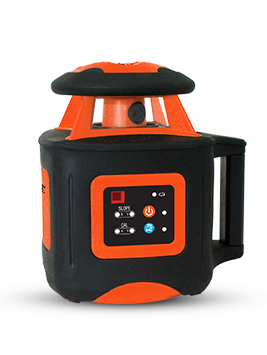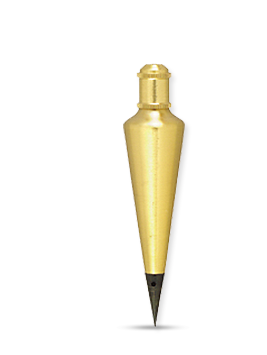Johnson Red Beam Industrial Magnetic Pulley (Sheave) Alignment Laser
OK. Let’s get this out of the way up front. I know that the Johnson Red Beam Industrial Magnetic Pulley (Sheave) Alignment Laser (Model: 40-6200) is not for everyone in woodworking or metalworking. However, considering that we have “weekend woodworkers” with CNC routers, CNC engraving lasers and full-on German sliding table saws in what they call garage workshops the Johnson Red Beam Industrial Magnetic Pulley (Sheave) Alignment Laser doesn’t even get close to the upper end of what a bunch of people spend in hobbyist metalworking and woodworking. The Johnson Red Beam Industrial Magnetic Pulley (Sheave) Alignment Laser does bring a high level of accuracy to many problematic alignment chores that have frustrated metalworkers and woodworkers for years. And, unlike many high precision tools, the Johnson Red Beam Industrial Magnetic Pulley (Sheave) Alignment Laser is dead simple to use.
Simply put the Johnson Red Beam Industrial Magnetic Pulley (Sheave) Alignment Laser is a tool that allows aligning the surfaces like those on pulleys and table surfaces very accurately using a tightly controlled beam of light. Since light does not bend, droop or sag its accuracy is not compromised by simple distance. That makes setup way easier as is being dead-on accurate. Aligning things like pulleys perfectly can dramatically reduce friction, wear and power loss. I have a planer that uses a gang of three belts and after four years of use there was virtually no belt dust in the cover. I checked the pulley alignment with the Johnson Red Beam Industrial Magnetic Pulley (Sheave) Alignment Laser and found that they were perfect. So are the belts after LOTS of use.
The Johnson Red Beam Industrial Magnetic Pulley (Sheave) Alignment Laser kit comes with a precisely machined aluminum bar that houses the special laser system. This laser projects a flat, wedge-shaped beam that spreads to about 60” at a distance of 3 feet. That beam is 1/16”-thick (at 30”) which matches up to the center of the three equally precision-machined “targets” that come with the kit. The laser is powered by two AAA batteries that are also supplied with the kit.
The bar and targets are equipped with powerful nickel-plated rare earth magnets that hold them fast to the surfaces being measured. The bar has three of these magnets to insure that it stays where you put it. These magnets are more expensive but the extra holding power is necessary to insure accuracy during use.
The three included targets have a V-shaped outer diameter with a 1/16”-wide flat surface at the crux of the V. That flat surface has a Retro-Reflective film applied that enhances the visibility of the laser beam. The body of the target is mounted on a threaded core that has the magnet in its base and a knurled knob at the top. The body can be turned on the core with 1 full turn producing 1/16” of height change. That lets you break up the full rotation using the dots on the core and body to show 1/64” at ¼-turn, 1/32” at 1/2-turn and so on. You can actually go between those positions, using clock positions to get even more precise if you really want or need to. The targets are large enough to make reading small increments easy yet they fit onto surprisingly small pulleys and surfaces.
In the Shop
Extending the usefulness of the Johnson Red Beam Industrial Magnetic Pulley (Sheave) Alignment Laser is that it can be used on flat surfaces or pulleys. You simply put the bar on one surface aimed at the surface or surfaces to be aligned. Adjust the targets to their “zero” setting (the core one turn below flush at the bottom surface) so that the center of the V-groove is at the same height as the laser in the bar. The beauty of this system is that you can put the targets wherever you need them to get the best measurement. You can also move them easily to check multiple spots on a surface to get a better picture of the how flat it is or if that surface is tilted in relation to the surface on which the bar is set. In woodworking things like table saw wings as well as jointer and planer tables can benefit from this measuring technology.
The first thing I checked was the alignment of the pulleys on my Powermatic PM15HH planer that has a gang of three drive belts. I had not checked the alignment of these pulleys since I got the machine four years ago and was surprised to find virtually no belt dust inside of the shield. I put the bar on the top pulley and all three targets spread across the lower pulley. When I turned the laser on it was instantly clear why there was virtually no belt wear. The pulleys were perfectly aligned.
I also checked the outboard tables on the same PM15HH and found that they were flat and coplanar. I suspected as much because I spent a bunch of time with long straight edges to get them that way – but that was also four years ago. Powermatic has the mounting of the tables figured out because they have stayed exactly where I put them four years ago.
Next I went to my jointer. I put the bar at the end of the outfeed table, one target at the center of the infeed table at the cutter head and the remaining two targets at the far corners of the infeed table. I raised the table to its zero depth setting and turned on the laser. I was on a roll. The tables were perfectly coplanar and at it zero setting the infeed table really is flush with the outfeed table! I reversed the bar and target positions to do the same check from the other end just to confirm all this and again, right on the money.
Next I dragged out the JET table saw and started shooting the laser across the main cast iron surface to the ends of the cast iron wings. Nearly all of those came out perfect as well. The exception was the operators’ side outboard corner of the left wing that was drooping a bit. I used the adjustment of the target to get the laser centered in the groove and found that the corner was low by about 1/128th of an inch! I loosened the mounting bolts at that end of the wing and the last bolt for the fence, gave the wing an upward tap and tightened everything up. Adjusted that target back to zero, replaced it and turned on the laser. Now all of the targets showed that the offending corner of the wing was now properly aligned.
It is important to note is that each of these tests took well under 5 minutes to do. It took longer to get the machine out than to actually check it with the Johnson Red Beam Industrial Magnetic Pulley (Sheave) Alignment Laser. All you have to do is set the laser components where you need them and turn the laser on. You know right then if the alignment is right or not and in a few more seconds you can know exactly how much of a change is needed.
Conclusion
By now the stick and screw-measuring crowd will be foaming at the mouth and I will concede that the Johnson Red Beam Industrial Magnetic Pulley (Sheave) Alignment Laser might seem more appropriate for a commercial shop or repair person. But I promise there are more than a few who will want this kind of tool because of the accuracy and simplicity of use. As is always the case, no matter how many say it ain’t so there will be Johnson Red Beam Industrial Magnetic Pulley (Sheave) Alignment Lasers on the shelves of more home-based shops than they are comfortable with. Whatever your perspective, the Johnson Red Beam Industrial Magnetic Pulley (Sheave) Alignment Laser is a very well made and well thought out setup tool that makes determining this kind of alignment easy and quick.
If extracting the best performance from your machines and tools through accurate setup the investment in a Johnson Red Beam Industrial Magnetic Pulley (Sheave) Alignment Laser makes more sense. Of course if you just think that it is cool and have the cash, I can understand that as well. I have this high-buck racing oil pump pulley removal tool that I use on the pulleys of machines that cost less than the tool did…..

































